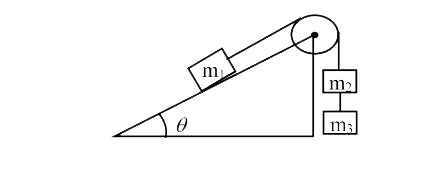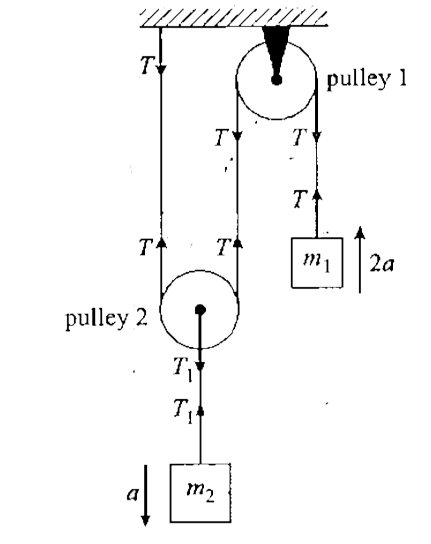A step pulley system is shown in figure-2.50. Find the relation in masses m and M for which the system remain in equilibrium. Assume string will not slide over the pulleys. (r1r2=12,r3r4=34)
![A step pulley system is shown in figure-2.50. Find the relation in masses m and M for which the system remain in equilibrium. Assume string will not slide over the pulleys. ((r(1))/(r(2))=(1)/(2),(r(3))/(r(4))=(3)/(4)) [(M)/(m)=(3)/(8)sintheta]](https://d10lpgp6xz60nq.cloudfront.net/physics_images/GAL_PHY_MEC_V01_C02_E01_055_Q01.png)
[Mm=38sinθ]
Step by step video & image solution for A step pulley system is shown in figure-2.50. Find the relation in masses m and M for which the system remain in equilibrium. Assume string will not slide over the pulleys. ((r_(1))/(r_(2))=(1)/(2),(r_(3))/(r_(4))=(3)/(4)) [(M)/(m)=(3)/(8)sintheta] by Physics experts to help you in doubts & scoring excellent marks in Class 11 exams.
Updated on:21/07/2023Similar Questions
Knowledge Check
In the pulley system shown here, find the relationship between acceleration of m1,m2 and m3
 A2a1+a3+a1=0B2a2−a3+a1=0C2a2+a3−a1=0D2a2−a3−a1=0
A2a1+a3+a1=0B2a2−a3+a1=0C2a2+a3−a1=0D2a2−a3−a1=0All surfaces shown in figure are smooth. For what ratio m1:m2:m2:m3, system is in equilibrium. All pulleys and strings are massless.
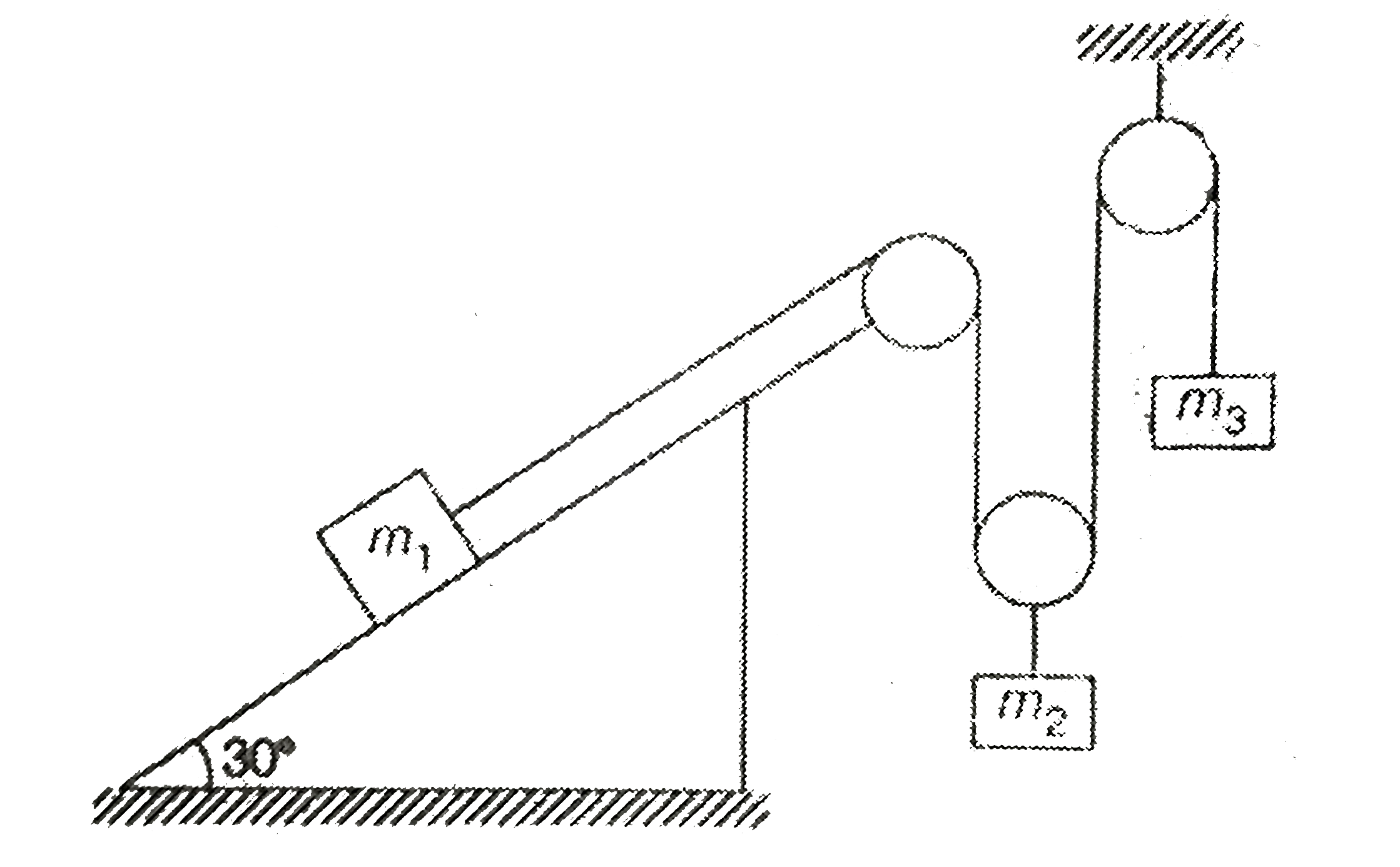 A1:2:1B2:2:1C2:1:2D1:2:3
A1:2:1B2:2:1C2:1:2D1:2:3Two masses m and M are attached to the strings as shown in the figure. If the system is in equilibrium, then
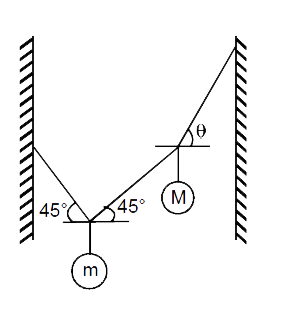 Atanθ=1+2MmBtanθ=1+2mMCcotθ=1+2MmDcotθ=1+2mM
Atanθ=1+2MmBtanθ=1+2mMCcotθ=1+2MmDcotθ=1+2mM
As shown in figure pulley is ideal and strings are massless.If mass m of hanging block is the minimum mass to set the equilibrium of system, then -
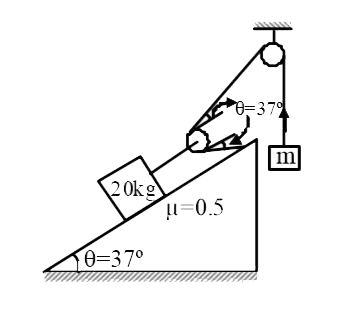
View SolutionTwo masses m1 and m2 are attached with light strings as shown. If the system is in equilibrium, find the value of θ
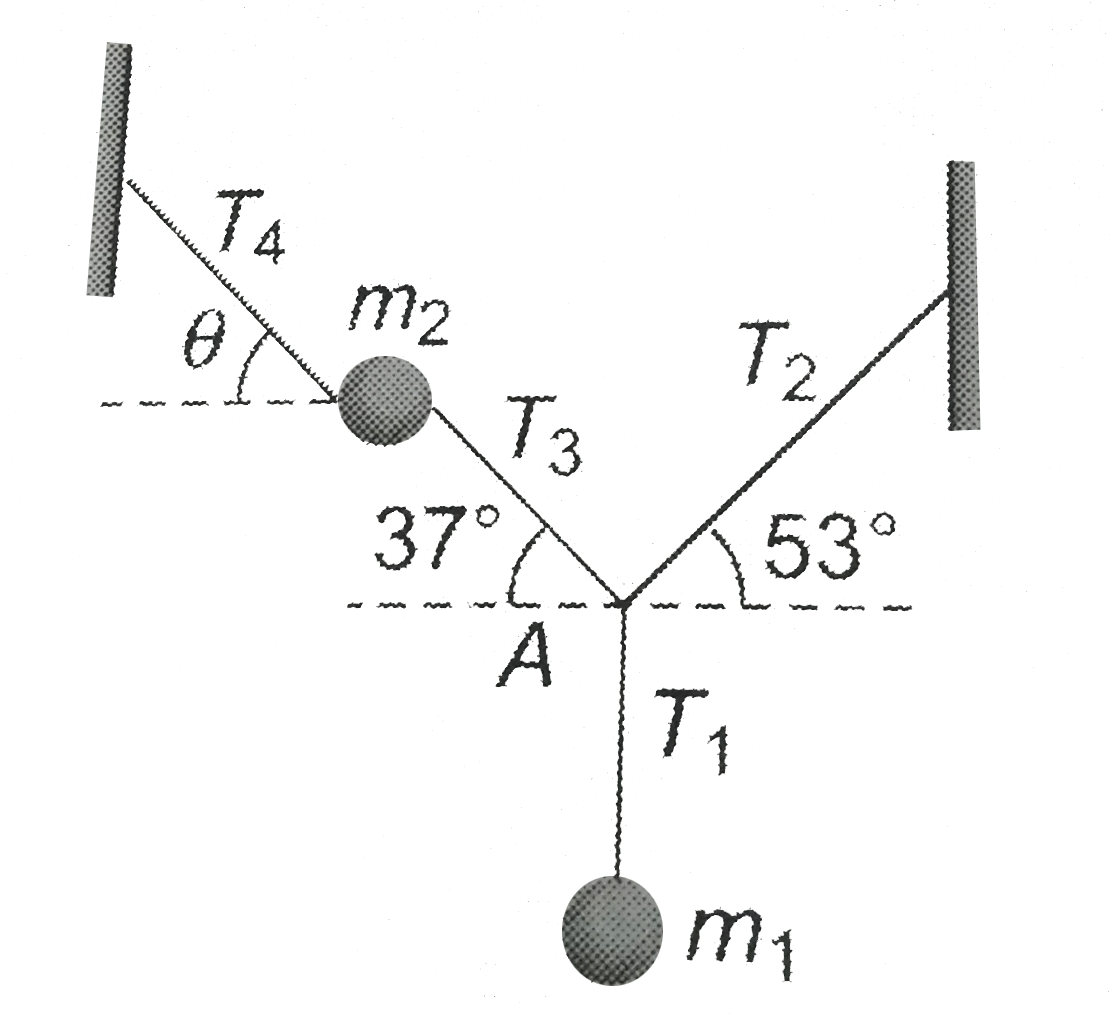
View SolutionIn the figure, the blocks have masses M1andM2(M1>M2) and acceleration a. The pulley P has a radius r and some mass the string not slip on the pulley
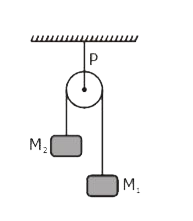
View SolutionIn the figure shown, the strings and pulleys are massless. The blocks are in equilibrium. If the force by the clamp on the pulley is √83 mg then Mm is equal to
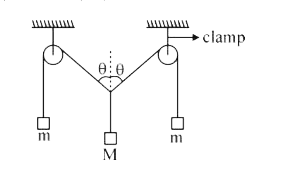
View Solution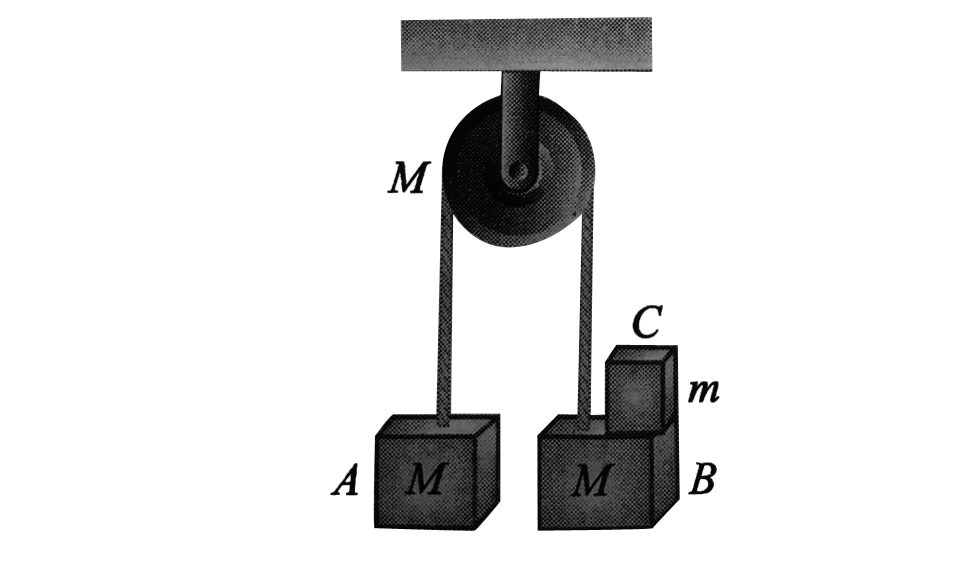
For the following system shown assume that pulley is frictionless, string is massless (m remains on M),
Q. The force on the ceiling is
View Solution


